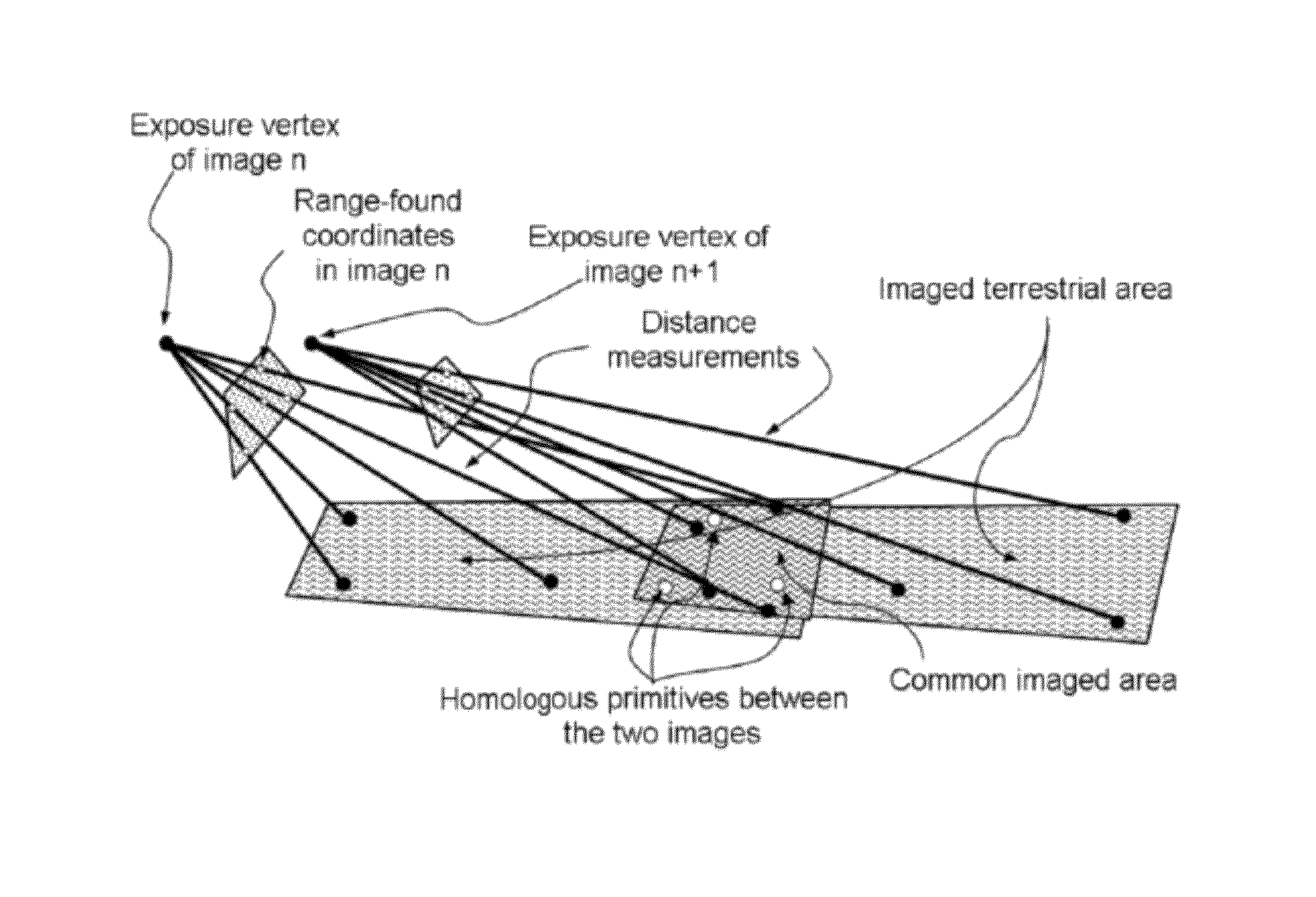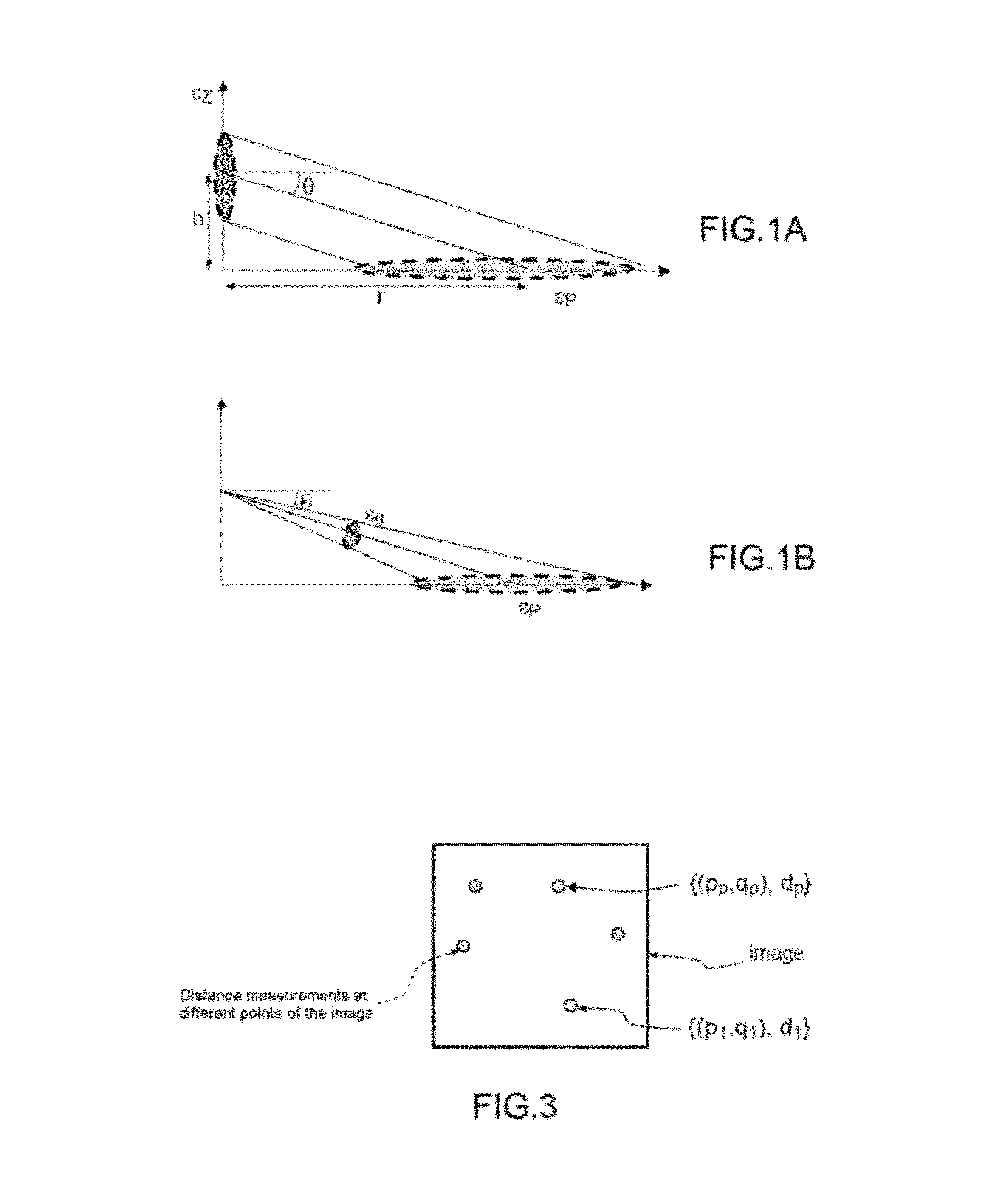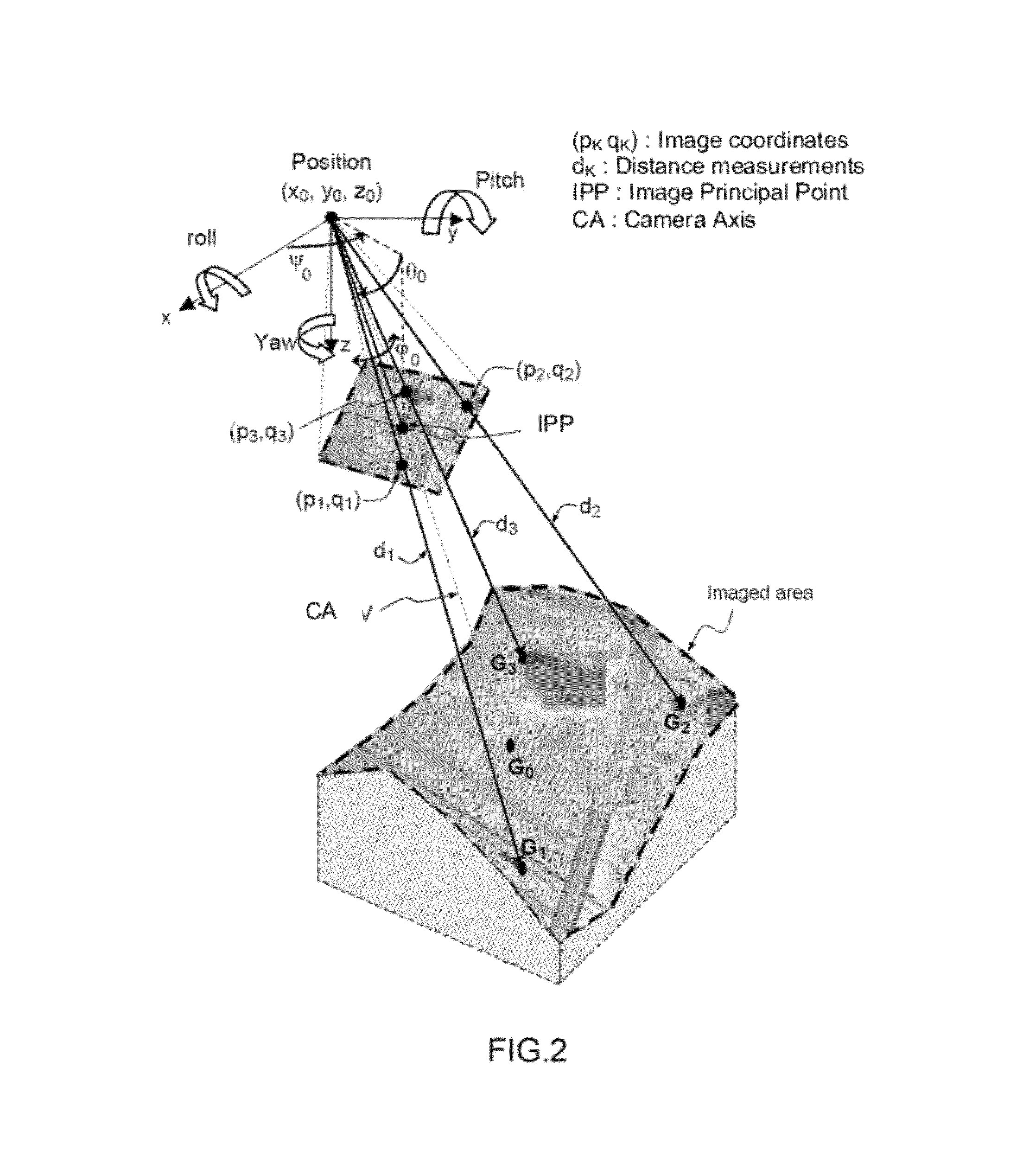Method for geo-referencing an imaged area
a geo-referencing and image technology, applied in image enhancement, reradiation, instruments, etc., can solve the problems of large distance with decametric efficiency, error of approximately 270 m, and error that is found
- Summary
- Abstract
- Description
- Claims
- Application Information
AI Technical Summary
Benefits of technology
Problems solved by technology
Method used
Image
Examples
first embodiment
[0263]According to the method, described in relation to FIGS. 2 and 3, a single image is acquired and P points are range-found in this image (M=K=1 in the two figures, P=3 in FIG. 2 and P=5 in FIG. 3). This makes it possible to perform the geo-referencing of the imaged area almost instantaneously with the acquisition of an adjustable number of distances by the range finder.
[0264]As illustrated in FIG. 4, to obtain these P distances in one and the same image, the range finder is, for example, equipped with means for splitting the beam emitted into P separate beams, each separate beam targeting a point to be range-found; in this case, the energy Ep of a separate beam is less than Et / P, Et being the total energy of the beam before it is split.
[0265]According to one alternative, the range finder is equipped with rapid beam-deflection means, this deflection being such that the time to acquire each distance is less than or equal to the ratio of the time to acquire this image to the number...
second embodiment
[0270]According to the method, described in relation to FIGS. 5 and 6, M images are acquired in succession (with M>1) and P points are range-found in K images, with 1≦K≦M. This in a way is the same as the preceding embodiment, but extended to M images.
[0271]It will be noted that it is possible to form one large image from M images, but this is not essential in estimating the parameters xe, ye, ze, φe, θe, ψe of each image.
[0272]When there is more than one image, it is essential for the images to overlap at least two by two in order for them to be able to be mapped together. The overlap may vary within a wide range from a minimum of the order of 10% to almost 100% (a value of 60% corresponds to the conventional aero-triangulation conditions for the civilian applications in which the acquisitions are vertical). Two successive images are mapped together by using homologous primitives (representing the same details of the scene) belonging to the overlaps of the images. These primitives ...
third embodiment
[0290]According to the method, described in relation to FIGS. 7A and 7B and which is a particular case of the preceding embodiment, M images are acquired and P points are range-found in K images with K=P; there is therefore a single range-found point in each of the K images (M=4, K=P=3 in the figures). Since the range finder is harmonized with the COA of the detector, these range-found points are respectively at the center of each of the K images. As can be seen in FIG. 7B, 2 homologous points are extracted in the area of overlap between the images 1 and 2, three are extracted in the area of overlap between the images 2 and 3, and two are extracted in the area of overlap between the images 3 and 4. This approach does not require any material change to the existing equipment or equipment that is now envisaged.
[0291]It will also be noted that it is possible to have P>K. Some images may not have any range-found point, since they have homologous primitives with other images which themse...
PUM
 Login to View More
Login to View More Abstract
Description
Claims
Application Information
 Login to View More
Login to View More - R&D
- Intellectual Property
- Life Sciences
- Materials
- Tech Scout
- Unparalleled Data Quality
- Higher Quality Content
- 60% Fewer Hallucinations
Browse by: Latest US Patents, China's latest patents, Technical Efficacy Thesaurus, Application Domain, Technology Topic, Popular Technical Reports.
© 2025 PatSnap. All rights reserved.Legal|Privacy policy|Modern Slavery Act Transparency Statement|Sitemap|About US| Contact US: help@patsnap.com



